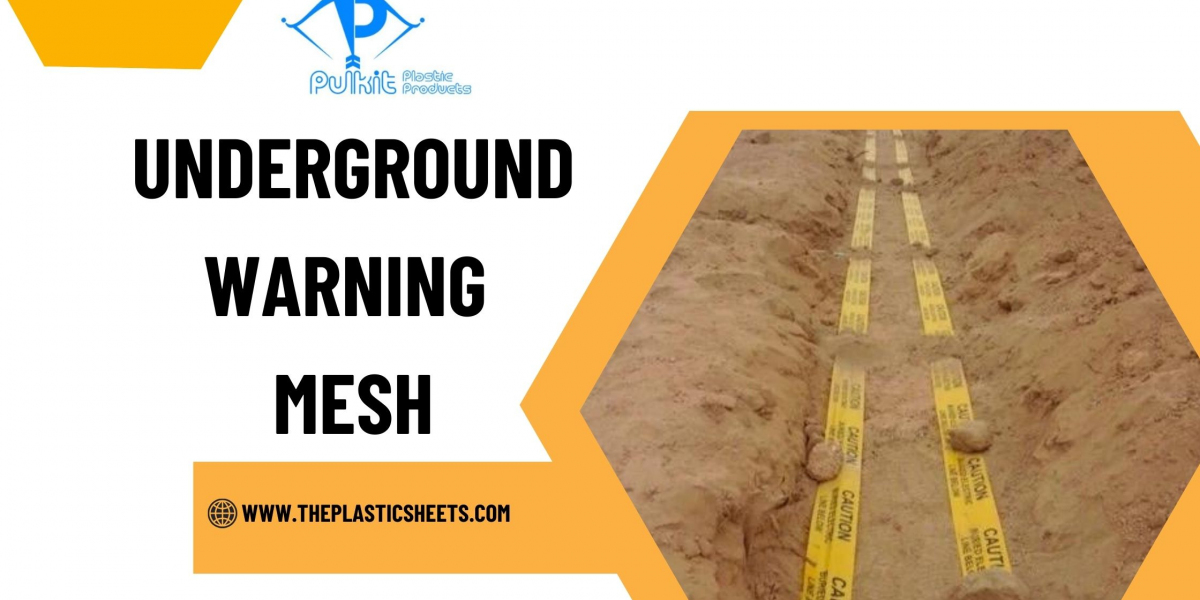Underground warning tape is an essential safety tool used in various applications to identify buried utilities and hazards. When installed properly, this tape serves as a visual alert for workers, contractors, and utility companies, preventing accidental damage during excavation and construction activities. Choosing the right type of underground warning tape can make a significant difference in enhancing safety and efficiency on the job. In this article, we will explore different types of underground warning tapes, their applications, and factors to consider, including plastic underground warning tape, detectable warning tape, and underground warning tape price. We will also answer some frequently asked questions to guide you in making an informed choice.
Understanding Underground Warning Tape
Underground warning tape is typically made from durable plastic materials and is designed to be buried just above underground utilities like water, gas, electricity, and telecommunications. The tape serves as a warning signal, alerting workers to the presence of these utilities to prevent accidental damage during excavation.
Types of Underground Warning Tape
Plastic Underground Warning Tape: This is the most commonly used type of warning tape. It is lightweight, durable, and available in various colors that correspond to the type of utility it marks. For example, yellow tape often indicates gas lines, while red indicates electric lines.
Detectable Warning Tape: This type of tape includes a metallic component that makes it detectable using specialized equipment. Detectable Warning Tape is particularly useful for deep burial applications where conventional plastic tape may not be visible. It helps locate buried utilities quickly and efficiently, minimizing the risk of damage.
Custom Warning Tape: Some suppliers offer customizable warning tape that allows you to print specific messages or logos. This can be useful for branding or for providing additional information about the buried utilities.
Applications of Underground Warning Tape
1. Utility Marking
One of the primary applications of underground warning tape is for marking utilities such as water, gas, electric, and telecommunications lines. Different colors indicate various types of utilities, providing a clear visual warning for workers and reducing the risk of accidental strikes during excavation.
2. Construction Sites
Construction sites often involve digging and trenching, making them high-risk areas for utility strikes. Installing underground warning tape before any excavation helps to alert workers to the presence of buried utilities, facilitating safer digging practices.
3. Landscaping
When performing landscaping work, it’s crucial to identify the location of buried lines. Using underground warning tape in landscaped areas can prevent accidental damage to utilities during planting or digging activities.
4. Roadwork and Public Works
In public works projects, identifying buried utilities is essential for maintaining infrastructure. Underground warning tape helps ensure that excavators are aware of utility lines, reducing the likelihood of service interruptions or accidents.
Factors to Consider When Choosing Underground Warning Tape
1. Type of Utility
Understanding the type of utility you are marking is crucial. Different colors represent different utilities, and knowing these standards can help you choose the appropriate tape. For example:
- Red: Electric
- Yellow: Gas, oil, steam
- Blue: Potable water
- Green: Sewers and drain lines
- Orange: Communications cables
2. Visibility and Durability
Choose a tape that is made from durable materials to withstand soil conditions, weather elements, and potential wear and tear. Additionally, the tape should have high visibility colors to ensure it can be seen by workers, even in low-light conditions.
3. Depth of Burial
For deeper installations, detectable warning tape is often recommended. This tape's metallic component allows it to be located using a detection device, making it easier to find buried utilities without disturbing the ground.
4. Environmental Conditions
Consider the environment in which the tape will be used. Factors such as soil acidity, moisture levels, and temperature extremes can affect the performance of the tape. Ensure that the tape you choose is designed to withstand the specific conditions of your project site.
5. Cost and Value
Understanding the Underground Warning Tape Price is crucial for budgeting. While lower-priced options may be tempting, ensure that you are not compromising on quality. Investing in high-quality tape from reputable suppliers like Pulkit Plastic Products can save you from costly mistakes down the line.
Conclusion
Choosing the right underground warning tape is essential for ensuring safety in various applications, from construction sites to utility marking. By understanding the different types of tapes available—such as Plastic Underground Warning Tape and detectable warning tape—and considering factors like utility type, visibility, durability, and environmental conditions, you can make informed decisions that enhance safety and efficiency.
Investing in high-quality warning tape not only prevents accidents but also fosters a culture of safety in your organization. For reliable options and competitive underground warning tape prices, look no further than reputable suppliers like Pulkit Plastic Products By implementing effective warning systems, you can mitigate risks and ensure that your projects are completed safely and efficiently.
Frequently Asked Questions (FAQs)
Q1: What colors are commonly used for underground warning tape?
A: Common colors and their meanings include:
- Red: Electric
- Yellow: Gas, oil, steam
- Blue: Potable water
- Green: Sewers and drain lines
- Orange: Communications cables
Q2: Can I customize underground warning tape?
A: Yes, many suppliers offer customizable warning tape that allows you to print specific messages, logos, or symbols according to your project requirements.
Q3: How deep should underground warning tape be buried?
A: Generally, underground warning tape should be buried 12 to 18 inches above the utility line it marks. However, local regulations may vary, so it’s essential to check guidelines in your area.
Q4: Is detectable warning tape worth the extra cost?
A: Yes, detectable warning tape can be invaluable, especially for deep burial applications. It allows for quick and easy identification of buried utilities, reducing the risk of damage and enhancing safety.
Q5: Where can I purchase underground warning tape?
A: You can purchase underground warning tape from specialized suppliers such as Pulkit Plastic Products, which offers a range of options tailored to various applications.









